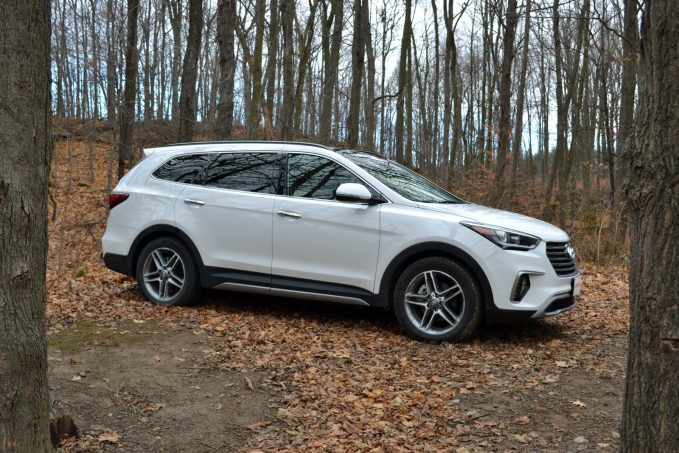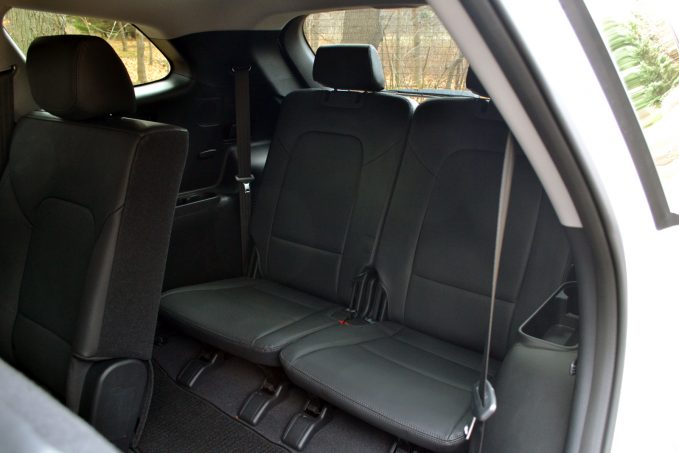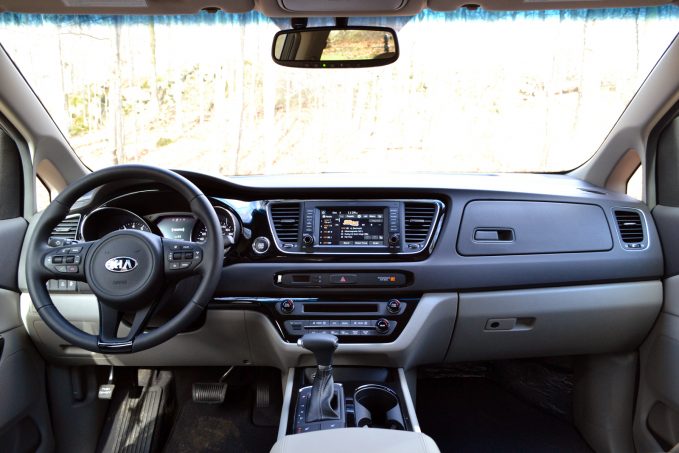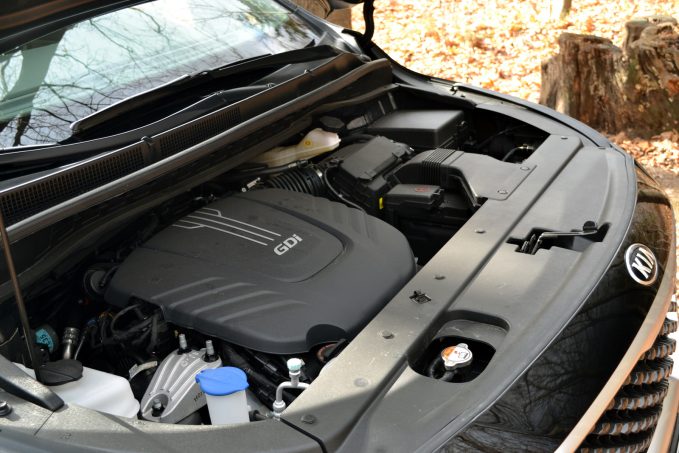It used to be that if you had a family, you drove a sedan. And then it was a wagon. My generation? We grew up with minivans.
Sure, they weren’t cool, at least not by traditional standards, but nothing was more practical. And then somewhere along the way, minivans became the mullet of the auto industry, with only a small group of folks brave enough to be seen with them in public. In their stead came crossovers of all shapes and sizes, which quickly earned the unofficial title as the next big thing in family haulers.
But are they really better suited for family life than minivans? To find out, we brought together the latest versions of the Kia Sedona and three-row Hyundai Santa Fe, two of the best in their respective segments.
Get the Flash Player to see this player.
Making The Minivan’s Case
There may not be a better ambassador to represent the few remaining minivans on the market than the Kia Sedona. It’s not the most affordable option out there — that title belongs to the rapidly aging Dodge Grand Caravan — but it easily offers the most bang for your buck.
ALSO SEE: 2017 Chrysler Pacifica Review
Starting at a reasonable $26,800 ($27,995 in Canada), the Sedona comes preloaded with some solid-if-not-spectacular standard features for that price, including cruise control, a backup camera and automatic headlights. Of course, the Sedona can be decked out with everything from reclining second-row seats with folding leg rests to adaptive cruise control and 19-inch alloy wheels, but all those features push the price up substantially. Fully loaded models carry an MSRP of $41,900 ($46,695 in Canada), diminishing the Kia’s value proposition, but only slightly. Even at that price, the Sedona undercuts most of its top-trim competition by a fair amount but looks and feels just as impressive.
The tester used for the purposes of our comparison falls somewhere in the middle of the price spectrum, which is where you’ll find the Sedona’s sweet spot. For $33,600 ($36,695 in Canada), it packs a nice amount of premium content inside and out without breaking the bank.
Countering With a Crossover
With all due respect to the likes of the larger — and pricier — Ford Explorer, there may not be a better three-row crossover on the market than the Hyundai Santa Fe. Its position at the top is only cemented by its competitive pricing, making it the best minivan alternative available.
Base models will set you back $30,800 ($32,199 in Canada), and, much like the Sedona, come fitted with few features to get excited about but enough to justify the price. And just like its counterpart from Kia, the Santa Fe can be optioned out to keep pace with the segment’s best — but it will set you back a few extra bucks. At $38,700 ($44,799 in Canada), our tester falls closer to the top end of the Santa Fe’s pricing structure, which is where it starts to come into its own.
Room For The Whole Clan
But with a crossover like the Santa Fe, it’s all about space, something Hyundai’s largest offering delivers with ease. In the interest of fairness, we chose a seven-passenger version of the Santa Fe to go up against the Sedona, but second-row captain’s chairs are available.
Regardless of seating arrangements, legroom in the Santa Fe’s second row offers an impressive amount of space, with a maximum of 40.4 inches (1,026 millimeters) on offer. On paper, the Sedona’s second row provides a comparable 40.6 inches (1,031 mm) but feels like much more. Both offer more than enough space for children and adults alike, with no need for folks riding up front to jam their knees into the dashboard to accommodate additional passengers.
ALSO SEE: Midsize Three-Row Crossover Comparison Test
It’s only in the third row where the Sedona’s passenger space stands out from the Santa Fe’s both on paper and in practice, with 34.8 inches (884 mm) of legroom compared to 30.9 inches (785 mm). The third row in the Sedona is also easier to access than the one in the Santa Fe and is useable for more than just emergency situations.
Space Reigns Supreme
But it’s when it comes to hauling cargo that the Sedona packs its biggest advantage over crossovers like the Santa Fe. Open the tailgate, and cargo room is a respectable 33.9 cu-ft (960 liters) thanks to a deep floor well needed to stow the third row of seats flush with the floor. Tuck away the third row, and space grows to 78.4 cu-ft (2,220 liters), which is
almost the same as the Santa Fe with both rows out of the way, while removing the second row of seats provides a maximum of 142 cu-ft (4,021 liters) of space.
Compare Specs
Cargo room in the Santa Fe is respectable for a three-row crossover, but it can’t come anywhere near matching the likes of a minivan. Space with all three rows of seats upright sits at a paltry 13.5 cu-ft (382 liters), which is less than the average sub-compact hatchback, but it does have enough room for day-to-day jobs like a trip to the grocery store. Tumble the third row into the floor, and the Santa Fe offers 40.9 cu-ft (1,158 liters) of space, which is more than enough room for a trip to Costco. Fold the second row, and cargo room swells to an impressive 80 cu-ft (2,265 liters).
When it comes to towing, both do reasonable jobs. The Santa Fe is rated to tow as much as 5,000 lb (2,268 kg), which is quite a bit for a crossover, while the Sedona is good for 3,500 lb (1,588 kg).
Plenty of Premium Features
On the comfort and convenience side, both the Sedona and Santa Fe are available with just about everything you’d want in a family hauler this side of a rear-seat entertainment system.
Our tester Sedona features heated and ventilated front seats and heated second-row seats, as well as tri-zone automatic climate control and a touchscreen infotainment system that has Android Auto and Apple CarPlay compatibility. It also features an attractive two-tone leather upholstery that’s easy to clean in the event of an inevitable spill, and a power tailgate and power sliding doors that make great companions for families, providing hassle-free access when it’s time to strap the kids into their car seats.
ALSO SEE: 2017 Subaru Outback 2.5i Review
It’s much the same story in the Santa Fe, with our tester decked out with almost identical features, with the added bonus of a panoramic sunroof. The infotainment system features Android Auto compatibility, though Hyundai hasn’t yet worked out the details to include Apple CarPlay. It is, however, on its way.
On the safety side, practically all the features you could want are available in the both the Sedona and Santa Fe, including adaptive cruise control and automatic emergency braking systems.
Same Powertrain, Different Drive
As Hyundai and Kia are sister brands, much is shared between them — including the 3.3-liter V6 that powers both the Santa Fe and Sedona. Mated to the same six-speed automatic transmission, engine response is smooth and linear, with plenty of power and reasonable fuel economy.
And while both are pretty easy to live with for commuting duty or a longer road trip, the Sedona seems to drive just that much better than the Santa Fe. It just seems much smoother, and it doesn’t feel like it’s hauling around all the extra sheet metal and glass around back.
The engine just seems to feel snappier in the Sedona, with a better throttle response than the Santa Fe and the sense of more power on tap. By the same token, the minivan actually feels lighter than the crossover despite weighing as much as 4,658 lb (2,113 kg) compared to 4,198 lb (1,904 kg).
The term “minivan” is a little misleading because the Sedona is pretty big. It stretches almost 17 ft (5,182 mm) long, which is about the size of a Mercedes-Benz S-Class, but it drives a lot smaller than its size would lead you to believe. Much of the credit goes to the power steering system, which cuts down on the van’s perceived mass, especially at low speeds, but it can feel a little too loose at higher speeds. The Sedona also provides a nice and commanding view from the driver’s seat, and the nose is nice and short, which comes in handy when maneuvering around parking lots.
None of that is to say the Santa Fe drives poorly; quite the contrary, actually. It does a lot well, and provides a more car-like ride than some of its competitors. And it can be had with all-wheel drive, something not available on the Sedona.
The Verdict: 2017 Kia Sedona vs 2017 Hyundai Santa Fe
When it comes to finding a new family hauler, the market is flooded with choice, with plenty of crossovers to pick from — and a few minivans and wagons still kicking around. So which would I choose? Sure, the Sedona doesn’t offer all-wheel drive like the Santa Fe, and it can’t tow as much, but it’s way more roomy and versatile, and still offers a smooth, car-like ride. It may not be the coolest thing out there, but there’s still nothing more practical than a minivan.












